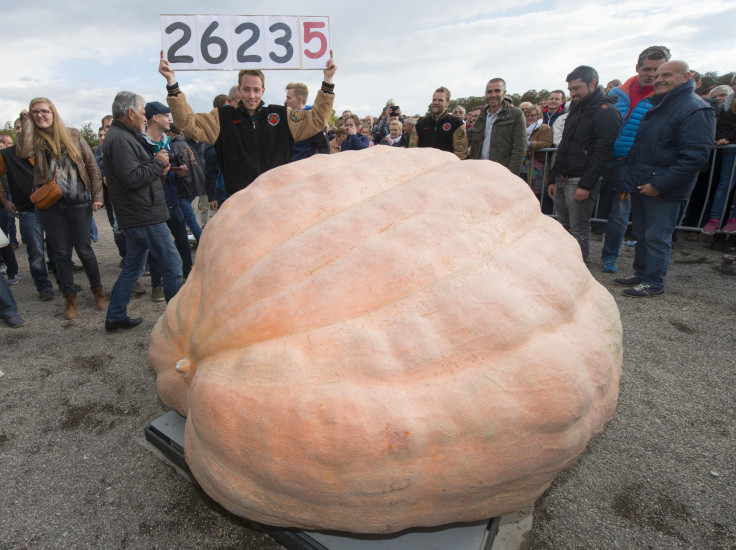World's Largest Pumpkin? World Record Broken At European Championship With Massive Gourd

Fall is the season of harvest, abundance and, apparently, for giant pumpkin-growing contests around the world.
This year, the Giant Pumpkin European Championship was held in Ludwigsburg, located in southwestern Germany, and a specimen at the championship took home the award for the heaviest pumpkin. The pumpkin, which entered the "weight-off" Sunday, weighed in at 1.190,5 Kg. (or around 2,623 pounds), according to ABS CBN.
The weight has officially topped the world record pumpkin weight. Mathias Willemijns from Belgium entered the Atlantic pumpkin in the annual contest.
Last year, a pumpkin weighing in at 2,145 pounds from Illinois broke the record in North America for the largest pumpkin, ABC News reported. At the time it was deemed the world’s second-largest pumpkin and was grown by Gene McMullen. McMullen said tthe secret to growing the larger-than-life gourd was patience and care. The pumpkin weighed in second to the world record-winner, which was a 2,323-pound pumpkin from Switzerland, grown by Beni Meier, according to Guinness World Records.
Other than care and a lot of time (it took McMullen 93 days and careful monitoring to ensure the pumpkin’s growth), what does it take to grow the world’s largest pumpkin? There are a few major tenants of growing giant pumpkins, Smithsonian Magazine reported last year. Apparently, it’s not too different from basic childcare: Food and watering, keeping the gourds at the ideal temperature and protecting the skins from dryness and covering them in the evenings to keep them…warm.
George Hamilton, an extension field specialist in fruits and vegetable from the University of New Hampshire, told Smithsonian genetics play a large factor.
“Number one is genetics, number two is genetics, number three is genetics,” Hamilton said. “And then number four you’ve got sun, warmth, fertilizer and water.”
© Copyright IBTimes 2025. All rights reserved.






















